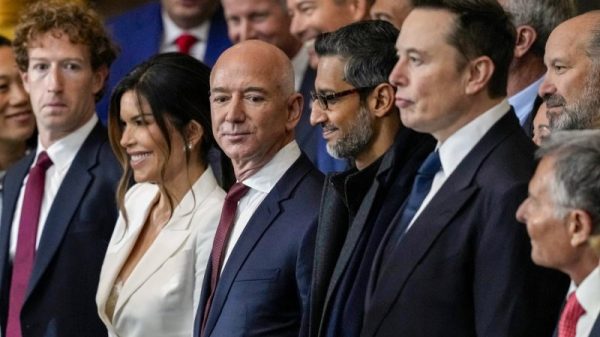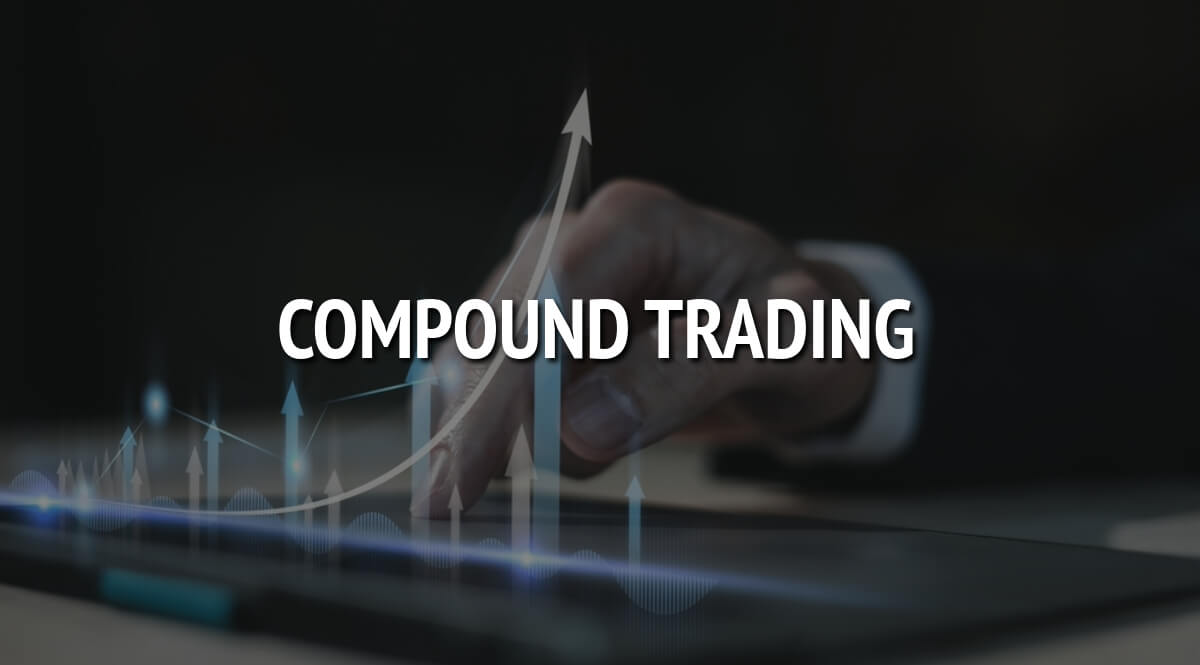How to Start Compound Trading: The Beginner’s Guide to Leveraging Returns
If you are an investor you might already know about compound investing. But what about compound interest trading? And how to start compound trading?
Starting compound trading can transform your investment strategy. This approach utilizes the power of compound interest, where the interest you earn generates additional interest over time.
Understanding the rule of 72 helps you estimate how quickly your investment will double based on a given interest rate. Whether you’re focused on long-term investments or seeking a specific rate of return, mastering compound trading is crucial.
It hinges on how interest accumulates over the number of years you invest, significantly boosting the potential returns. Dive into the mechanics of compound trading to leverage these principles effectively in your financial portfolio.
What is compound interest – definition
Before we show you how to start compound trading let’s start with the basics. According to one of the greatest scientists Albert Einstein, compounding represents the eighth wonder of the world.
In the world of investing and trading compounding really is a magical strategy to make your money grow. But what actually is a compound strategy in trading . And how it differs from compounding in traditional investing. Before we tackle compound interests in trading let’s see how it works in traditional investing.
In traditional investing, the principle of compound interest is quite simple. The interest generated on your capital is directly added to this capital so that it is integrated into the next interest payments.
When you invest money, you earn interest on the money you invest, but also, later, on the interest you have accumulated by investing your money. Your money earns you interest, which in turn earns you interest, and so on.
Let’s take an example. Let’s invest €1000 at 5% per year, for 3 years:
Year 1: €1000.00 at 5% or €1050.00 (€50.00 interest).
Year 2: €1050.00 at 5% or €1102.50 (€52.50 interest).
Year 3: €1102.50 at 5% or €1157.62 (€55.10 interest).
Each year, the interest earned increases. In the long term, that is to say over several decades, they can reach colossal proportions. When you invest for your retirement, for example, the capital that you will obtain in the long term will mainly be composed of compound interest.
How Does Compound in Trading Work?
Compundt trading consists of leveraging the potential of regular small profits to reach long term financial growth. It’s similar to the snowball effect. The ball, as it rolls, grows larger. Let’s see how it works.
In simple words, compound trading consists of pocketing profits you make in trading and reinvesting it. But you might be asking why you should reinvest the profits. The answer is simple: exponential value growth. If you regularly reinvest your profits you maximize the potential of your initial investment. And eventually it leads to considerable gains particularly compared to trading strategies where gains are regularly withdrawn.
Example of Compound Trading
A trader begins with an initial investment of $10,000 and sets a goal for a 5% monthly return using specific strategies. He chooses not to withdraw his profits each month but to reinvest them. Here’s how the magic of compound trading unfolds over the course of a year:
Each month, the trader reinvests the 5% profit, which adds to his initial capital. This means the investment base grows larger with each passing month. By reinvesting, he harnesses the power of compound interest. Each month’s gains build on the previous month’s total, not just the original investment.
For instance, after the first month, the trader’s account grows to $10,500. By reinvesting the $500 gained, he increases the capital that can earn interest. The following month, he earns 5% on $10,500, not just the original $10,000. This process repeats each month.
As the year progresses, his account doesn’t just grow linearly; it accelerates. The increase in his trading account is exponential because each month’s gain is a bit larger than the last. By the end of the year, this consistent reinvestment and accumulation of gains significantly enhance the value of his initial $10,000 investment.
This strategy of reinvesting profits rather than withdrawing them allows the trader to maximize the benefits of compound interest, turning a substantial profit by year-end due to the cumulative growth of his investment.
How to start compound trading?
Compound trading excites every trader, and rightly so. But how do you start?
First, deposit an initial amount into your trading account. This is your base capital, and it kickstarts your trading journey. The amount will depend on your financial situation and how much risk you’re willing to take.
Next, you must develop and backtest a trading strategy. Create a trading plan and test it against historical data to see its past performance. This step is crucial as it allows you to fine-tune your strategy and spot potential problems before trading with real money.
Then, consider using a compound plan template. This helps you figure out how much of your profits to reinvest and how often. The aim is to find a balance between maximizing growth through reinvestment and taking some profits.
Finally, the key to compound trading is reinvestment. Reinvest your profits back into your trading account. This compounds your capital growth because you earn returns not only on your initial deposit but also on the profits you’ve reinvested.
Compound Trading – Pros and Cons
Now that you have a better picture of how to start compound trading, let’s tackle it pros and cons.
PROS
With compound interest, if the returns are positive your savings earn you a little more each year than the previous year. Therefore, the earlier you start saving, the more you will benefit from the power of compound interest. It’s the snowball effect: time is on your side.
If you do not have a large amount to invest and if you are rather cautious (which limits your potential return), time can still allow you to get rich thanks to compound interest.
CONS
After reading the above, you understand that investing at 10% for 10 years yields 100% (10 x 10%) with simple interest, but probably more with compound interest. Indeed: investing at 10% for 10 years yields 159.4% thanks to compound interest.
Thus, 1000 euros becomes €2000 with simple interest but €2,594 with compound interest.
Now let’s apply the same reasoning to fees. Let’s imagine that this same financial product bears annual management fees of 3%. After 10 years, how much fees will you have paid? 30% or €300? Alas, this is false.
Let’s resume our investment at 10%. After fees, it only earns 7% per year. The capital obtained at maturity becomes €1,967 in compound interest. The shortfall, €627, means that you paid 62.7% in fees during these 10 years (compared to the initial capital).
How to take advantage of compound interest
To benefit from compound interest, nothing could be simpler, simply place your capital in savings and leave it there! In fact, if you have an A booklet, you already benefit from it, except that the rate is so… disgusting, that you are not likely to see your capital increase. What to do then?
1. Management funds
Your bank can offer you management funds, your capital will be invested in various products by a third party and you will have a better performance than on a savings account… or not. We will tell you that performance is not guaranteed and that is logical. But you will still have a better chance of getting a better rate. Small downside, as the capital is managed by a third party, the bank will of course take its share of the added value. In the end with this solution, the performance will not necessarily be there.
2. ETFs/trackers
These are funds, as in point 1! Except that in this case, these are funds that replicate the performance of an index or a sector and they are not managed by a third party. This is an interesting solution because if we look at the average growth of the CAC40, we see an average return of 3.6%, which is already better than the banks. However, this average return is significantly reduced by the crashes of 2001 and 2008. If we look at the average performance from 1991 to 2000:
By adding up the performances from 1991 to 2000 and dividing everything by 10, we have an average annual growth rate of 16.147%: not bad eh? In fact, performance also depends on the economic context and therefore if you invest at the right time, it can be very interesting.
One last figure for your information: the average annual performance over the last 10 years is 4.6%
3. Invest your capital in the stock market alone
A final solution is to invest in the stock market yourself and that’s where it gets scary! And yet, it is not that complicated and with a minimum of knowledge, there is a way to greatly limit the risks! With this solution, achieving an annual performance of 10% is perfectly achievable and to do this it is possible to devote only one hour per week, or even less!
Conclusion – Does Compound Trading Work?
To succeed with a compound trading strategy, you need to consistently generate a fixed percentage return each month. This task is challenging but highly rewarding over the long term. The magic of compounding works best for those who can consistently profit over time. The crucial step in becoming a successful trader or active investor using compound trading is to develop a successful trading strategy. You must find trading strategies that suit you, backtest them on a demo account, and then apply them to a live trading or savings account.
The post How to Start Compound Trading: The Beginner’s Guide appeared first on FinanceBrokerage.


































